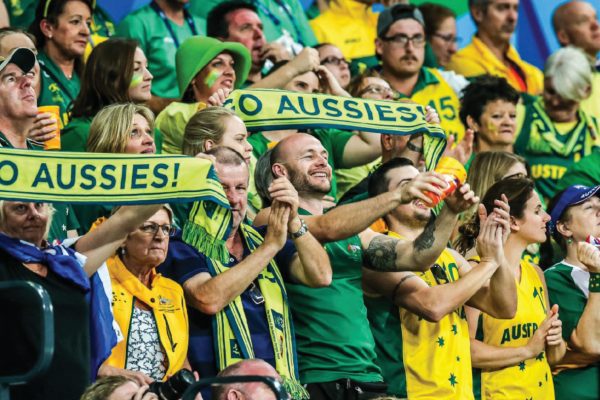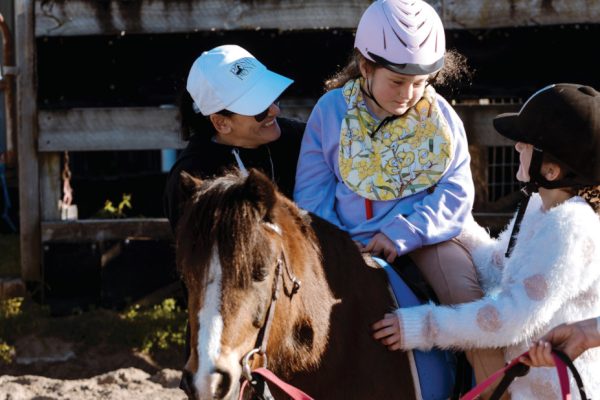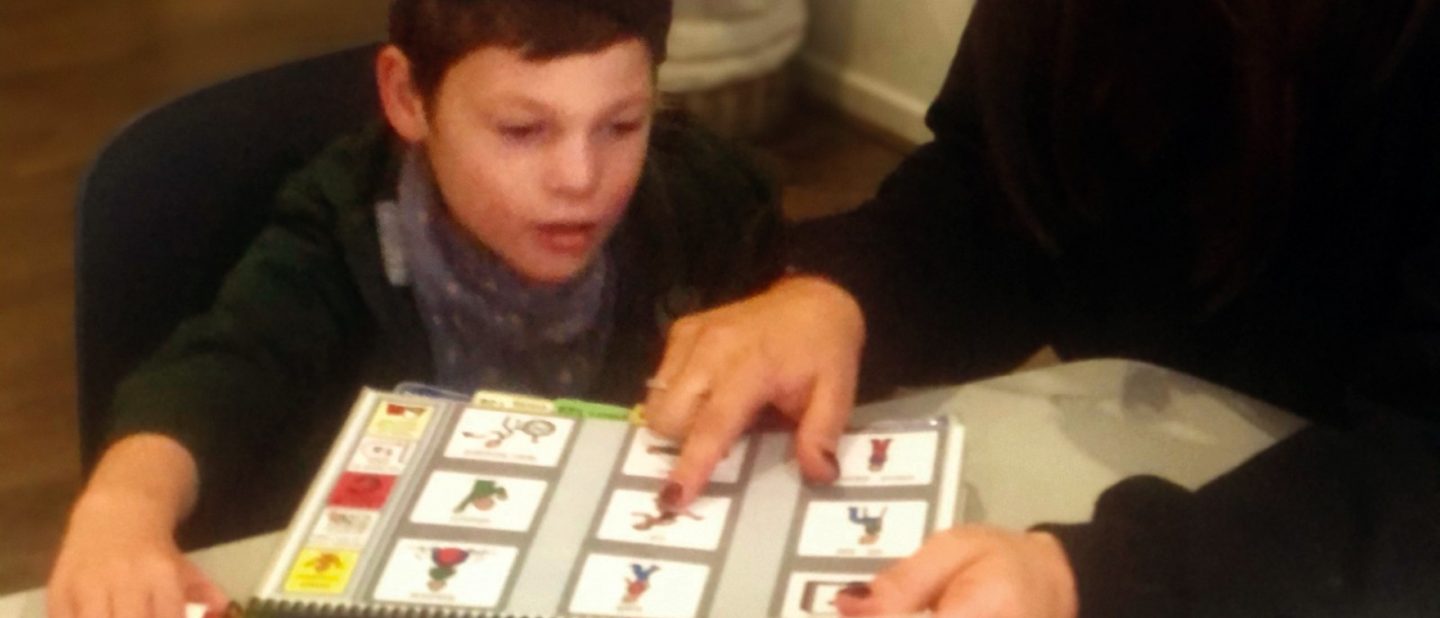
Life with an AAC device
We spoke to two mums – our very own Naomi, mum to Archer, and Menucha, mum to Mendy about their child’s journey using AAC to communicate.
Q. Can you tell us a little bit about your child and their diagnosis and why they use assistive communication?
M: Our dear son is gorgeous Mendy, who is 8 years old and has Angelman syndrome. He is super determined, cheeky and brings so much happiness and love to all those around him. He attends a specialist school 3 days a week and a Jewish mainstream school 2 days a week. Children with Angelman’s have significant communication difficulties.
N: Archer, my youngest son is 9. He is active, vibrant, full of spunk and is completely non-verbal. Over many years of searching and researching, we now know Archer has Coffin-Siris Syndrome, and also presents with Partial Agenesis of the Corpus Callosum. Archer has always been non-verbal. He never had the pre-communication skills such as mouthing, rolling his tongue etc, plus he has hypotonia – speech just never came. We started using AT as a family very early on and we haven’t looked back.
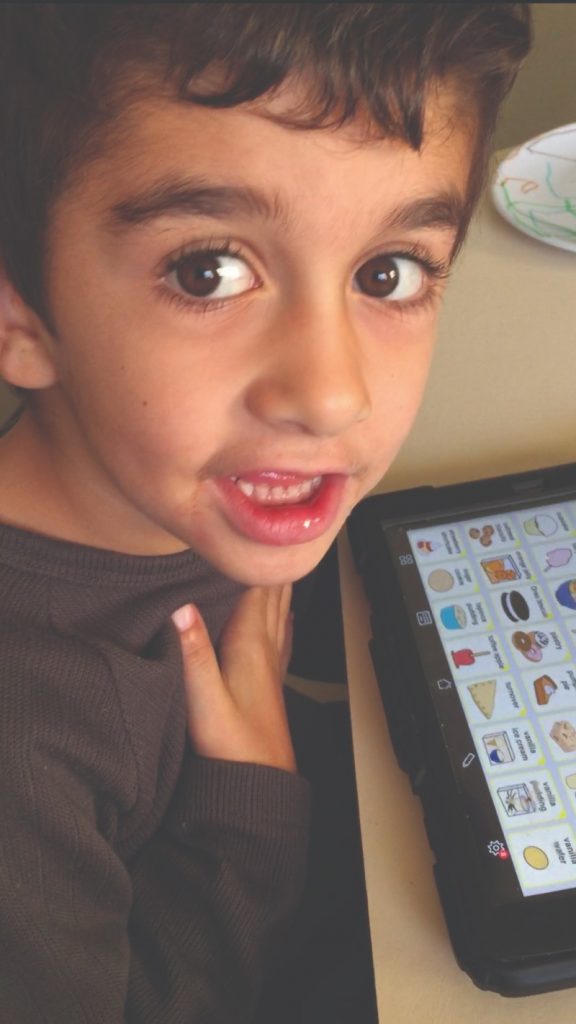
How long has your child been using AAC?
N: When we realised Archer’s speech was non-existent, he would have been around 2-3 years of age.
M: 2.5 years
Q: What device does your child use?
N: Archer currently uses Proloquo2Go on his iPads. We have multiple devices to ensure he always has his ‘talker’ with him wherever he might be. His developmental school put a custom template on it, and then this mama worked her magic to design each page to include everything he could need! All of the objects, people, food, books, toys, DVD titles, places, music etc. near and dear to Archer’s heart – it’s all in there, photographed and labelled.
M: Mendy uses PODD.
Q: Have they used any other form of AAC or did they go straight to the device they’re using now?
N: We began with PECS but we soon needed more range so we tried to move onto sign language and PODD. Sign language had its barriers, and still does; Archer spatially isn’t aware of his body so it can be quite tricky with the intricate movements. PODD just didn’t work for us even after months of trialling. I’m sure it works for other families but not for ours.
We also had a trial with the Novachat, that device is somewhere at the top of a cupboard! Proloquo2Go (P2G) was next on the list and we have not looked back! It is user-friendly, it is mum and dad friendly, and importantly brother friendly! We all use it.
M: Our son used PECS when he was in his Early Intervention program. We have used many different forms of the Boardmaker pics with different sheets designed for him.
Q: What has the learning curve been like for you and your family?
N: Where there is a will there is a way! Archer’s receptive language is impressive to say the least. He gets his messaging across no matter what AAC is used just by using his smarts and by thinking outside the box.
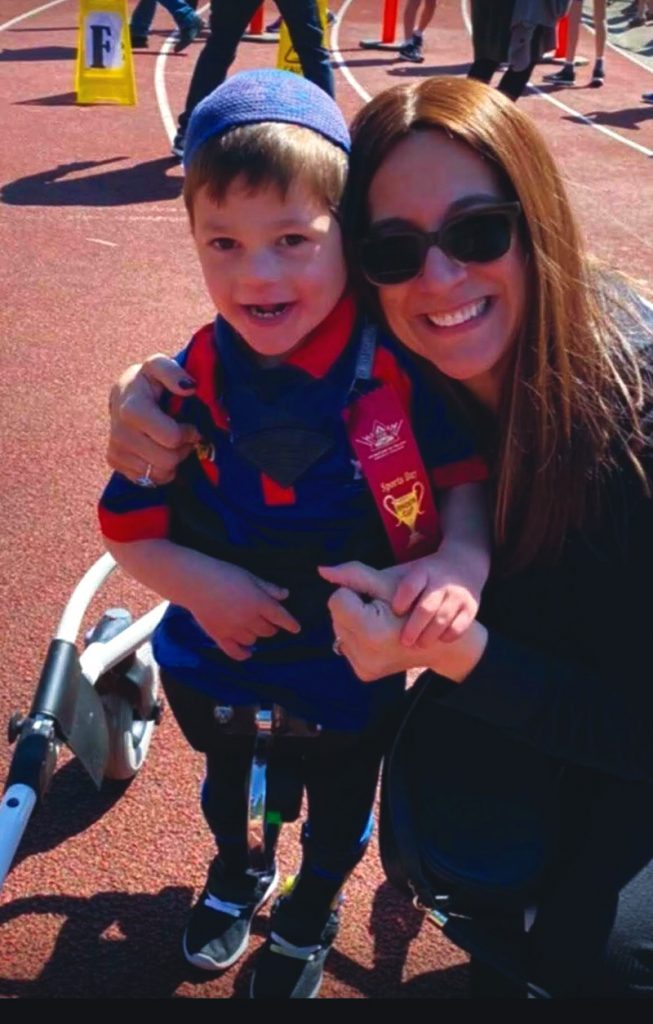
M: It’s been a challenge. In many other areas there are other ways of doing things such as crawling to get to what he wants etc, however with communication, it’s hard especially when he’s frustrated and upset.
Q: Did you have any breakthrough/aha! moments with use?
M: Not yet with the PODD book but he has said ‘more Bubbles” and more a few times. He also says mama but not always in context.
N: Oh, there have been many! When Archer started to use Proloquo2go to request his food, right through to now using the app efficiently in creating full sentences.
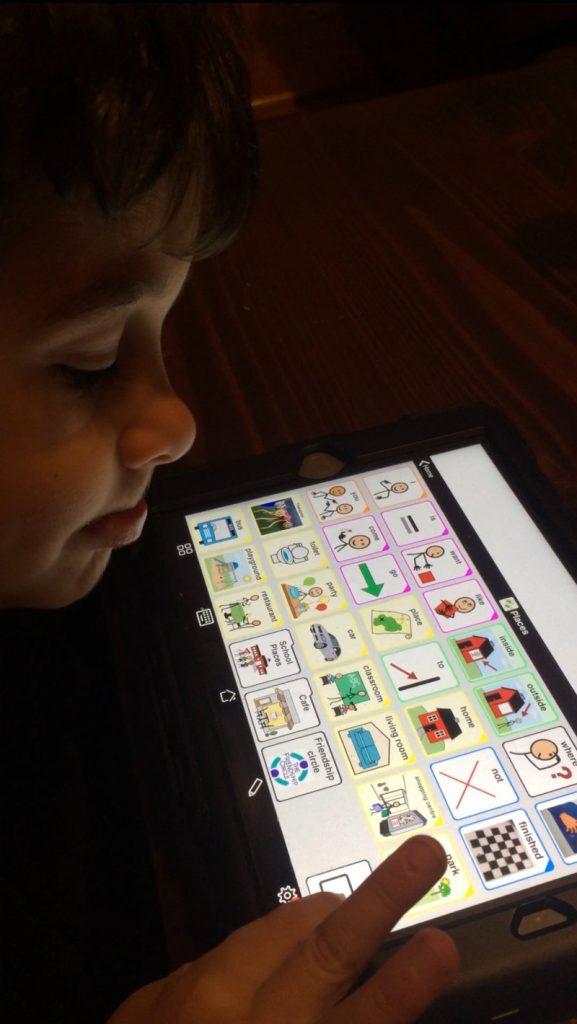

Scrolling through my phone and the many videos I have of Archer using his device, the most delightful are the messages to our loved ones. Happy Father’s Day to grandparents, Happy Birthday to friends and so on. It is impactful for him (the pride exudes) and more importantly those he is messaging.
Q: How do you and your child use their device at home?
N: We all use it. Modelling, talking through, requesting, this app is part of our everyday life.
M: Honestly, we don’t that much as it’s quite overwhelming. It’s more of us modelling at the moment. We find by the time we get to the correct page he has already lost interest and just wants to eat the book!
Q: Does your child use their device at school and in the community? Can you tell us a bit about that?
M: Mendy is at a specialist school 3 days a week and they use PODD full time at school. The teachers are unbelievable the way they use the book and the speed at which they use it! At his mainstream school they use more individualised PODD/Boardmaker sheets as they find this works better for them.
N: Yes. It is used from morning to night. It is our go to. I’m very protective over the iPad and with good reason. We lose that and we lose Archer’s voice. His school is proactive as are we, and when with family or friends or within the community it is very cool to see him communicate, even better to see them all light up knowing they CAN communicate with him.
Q: Do you have any tips or tricks for parents regarding use and/or modelling?
N: Don’t give up, work at it and find the right tool for you and your family; there are many options out there. You are all in it together, that’s the key to successful communication using AT.
M: I am a firm believer in going with your gut feeling and being realistic about what you can do as family. It’s important and defiantly worthwhile to be open to hearing about a range of different options and trying them. Nothing is set in stone, you can always stop something or change something.
Q: What communication goals do you have for the future?
N: For Archer to use keyboard and apps such as Proloquo2Go at all times. We use our voice at all times, why not him? The technology we have available nowadays is only going to become more innovative – I cannot wait to see what is on the horizon for my beautiful son to utilise.
M: We are looking into Eye Gaze as the school have been trying it and have said that he is doing well. We will keep trying to find the best way for our awesome Mendy to communicate with us.





